Differential circuit breaker: purpose, types, marking + selection tips
The differential switch action algorithm is based on providing reliable protection against possible leakage currents. For example, in cases of indirect contact with conductive elements or at moments of short-circuiting of live parts to the housing. The choice of protective device should be taken responsibly. Do you agree?
We will tell you how to correctly choose a differential circuit breaker, endowed with advanced protective functionality. In our article, we describe in detail the types of devices that can prevent a lot of threatening situations. Valuable recommendations are given to future buyers.
The content of the article:
Differential Current Device Operation
Considering the standard design of RCDs (UDT), three main modules should be highlighted:
- Summing current transformer.
- Trip converter.
- Locking device for switching elements.
Current-carrying conductors of the current circuit are connected to the contacts of the summing transformer. Given Ohm's law, according to which the sum of all currents gives zero, the magnetic effect of the current-carrying conductors of the transformer is mutually compensated.
The magnetic field, causing due to the induction effect, the appearance of the voltage of the secondary winding of the transformer, is not formed. This state corresponds to the normal current flow conditions in the circuit.
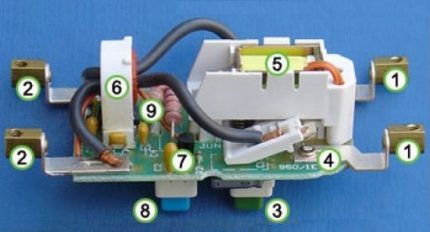
However, the formation of even a small leakage current violates this balance. The core region of the transformer is exposed to a residual magnetic field. As a result, the secondary winding produces voltage.
The release is naturally activated, converting the electrical quantity into mechanical action. Next, the differential current blocking device is triggered.
A similar protection technique is characterized as high-level, because the circuit is broken regardless of the mains voltage or the voltage of the auxiliary energy source. It is this principle of action that guarantees 100% protection in any circumstances.
The design of each differential current switch is usually equipped with a test key. The so-called “control button” is specially displayed on the front panel of the device so that users can check the operational readiness of the protective device.
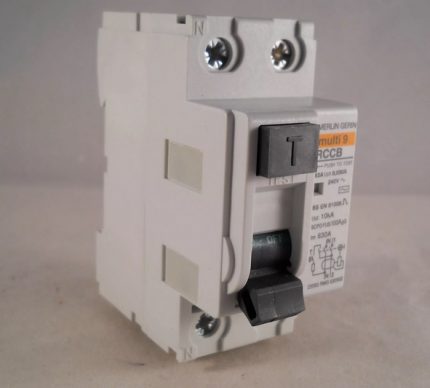
If you press the Test key, the mechanism of the device artificially generates a leakage current. In this case, a serviceable device is sure to work. Usually the “Test” button is used immediately after installing the machine in the circuit, the first time you connect electricity. Subsequently, they are tested according to the schedule, approximately once a quarter.
Types of residual current circuit breakers
The variety of circuit breakers is impressive. Thanks to such a variety, the possibilities of organizing effective protection in projects of any purpose are opened. Consider a few examples of the design of the RCD to evaluate all the existing advantages.
Standard Devices
The main purpose of standard devices, for example, the F, FH series, is to protect service personnel. Direct / indirect contact with live parts, risk of electric shock - such situations are reduced to zero when the F, FH series circuit breakers are used.
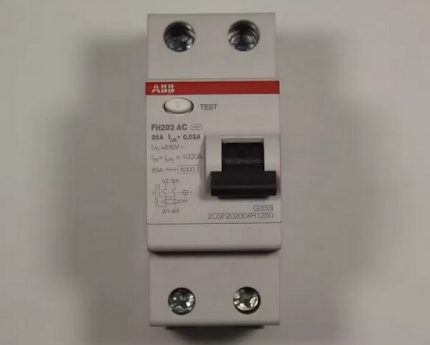
The best choice for use in household and commercial applications. Instruments also provide fire protectionif there are risks of cable fire under long-term exposure to leakage current.
This type of device is designed for implementation in AC networks with minimal levels of high harmonics and the absence of constant voltage. The load current 16 - 63A, the stock of mechanical cyclicity - 20,000.
Another example of standard selective devices is the ABB DS series. They are designed for installation and operation in single-phase networks. WITH principle of selectivity will familiarize you with an article that we highly recommend reading.
The purpose of the DS series differential current circuit breakers is to organize protective circuits against overloads and short circuit. The modules provide a clear work of protective functions for accidental contact with live lines or equipment elements.
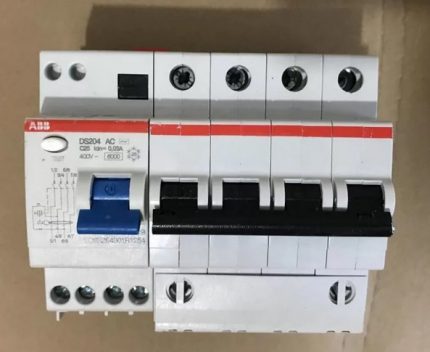
A distinctive feature of the DS series design is the presence of a visually detectable indication signaling the presence of leakage current. This is one of the designs of the protective device, due to which it is possible to prevent fire, to signal a violation of electrical insulation. Permissible load 6 - 40A. The cycle is 20,000.
The “home” differential circuit breaker of the AD series, BD is a product of the German company “Schneider Electric”, was developed, first of all, for implementation in the structure of household power networks.
The main purpose is to exclude electric shock to the physical body.Also, this type of protective device quite effectively and efficiently protects electrical equipment, cables, equipment.

The sensitivity of the machine for direct (indirect) contacts with parts of electrical equipment under voltage corresponds to the standard (30 mA). Standard sensitivity (100 - 300 mA) is also provided in case of detection of current leakage due to fires. A good solution for equipping residential buildings and office space.
Monoblock differential machines
Monoblock devices function in a complex manner, and this is their main difference from standard developments. They cover the whole range of protective functions that modern protection devices should have. True devices of standard design also provide users with wide functionality.
A striking example of residual current circuit breakers operating in an integrated functionality are products of the same Schneider Electric company. In particular, the models of the “Multi” series are load switches of selective and instantaneous action.
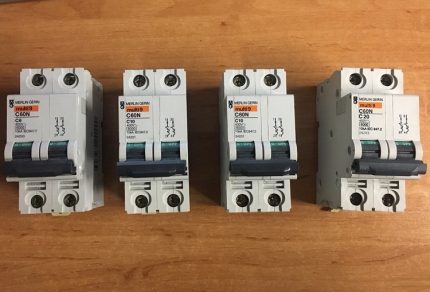
Automata, depending on the model, are intended for installation in the distribution networks of administrative (household) buildings of industrial production.
These UDTs provide circuit breakage at leakage currents of 10 to 500 mA. A design feature is the ability to adjust to exclude accidental operations (lightning discharges, breakdown through a layer of dust, etc.).
Surge protectors
Perhaps, a separate type of devices should be considered as design developments similar to circuit breakers, the implementation of which provides protection against surge surges.
As a rule, this type of device is endowed with ultra-high speed, a sensitivity level of 10 - 30 mA in case of a trip upon contact with live surfaces. The same machines guarantee reliable protection of equipment from overcurrents.
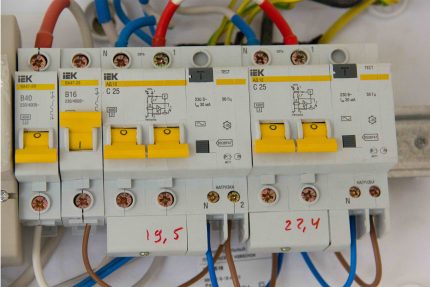
The range of rated currents here is usually 6 - 63A at voltages of 230 - 440 volts. Switching capacity reaches a value of 4500A. Structurally available for power supply through 2 or 4 poles.
From the same series, but slightly modified, circuit breakers with the characteristic “A” are seen. A good example is the AD12M series, where the expansion of protective functionality is noted. Among the additions is the shutdown function in case of an increase in the mains voltage above 265 volts for 0.3 seconds.
It should also be noted that devices endowed with the characteristic “A” have significant differences from the performance of differential automata with the characteristic “AC”. The first option is able to respond to a continuously pulsating differential current and to a sinusoidal current.
Mobile residual current devices
Industry (foreign and domestic) produces another variety of automatic differential switches in the design of a mobile type. That is, we are talking about portable devices controlled by differential current.
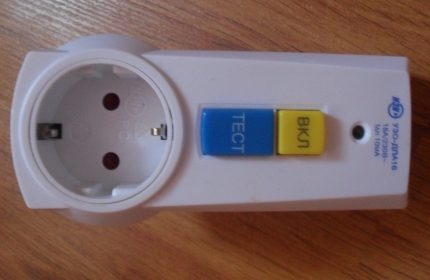
Such mobile modules are made in the form of a miniature unit, which is simply inserted into a household outlet. Meanwhile, this type of device is intended for use inside rooms belonging to the group of especially dangerous (with increased danger).
These devices are often installed as additional modules to existing ones. residual current circuit breakers.
This same type of device is a portable configuration, it is recommended to use it in domestic conditions to protect children and the elderly. As you know, the resistance of the body of young and old organisms is slightly different from the same size of a middle-aged human body.
Therefore, portable RCDs are made constructively as devices having an increased level of the trip setting. This setting value usually does not exceed 10 mA for mobile type devices.
Portable machines, for example, the UZO-DP series, are considered optimal protection for private urban and suburban real estate - cottages, country houses, garages, etc.
Marking UZO (UDT) on the case of devices
It should be noted that the case characteristic (symbols on the case) of modern devices shows almost complete information regarding the electromechanical and temperature parameters of devices.
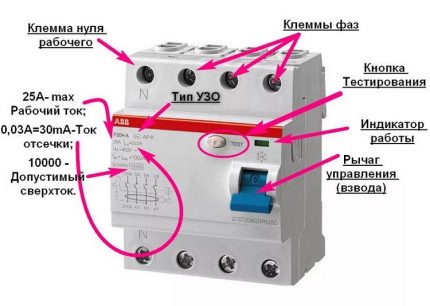
In fact, the user does not even need to refer to the accompanying documentation, since, knowing the notation, all information can be obtained by reading the information from the front of the case.
Among the designations, it is recommended to study a graph showing the characteristics of the machines with respect to the operating conditions: "A", "B", "AC", "F", which determines the sensitivity of the device to alternating and direct currents of various shapes.
The abbreviation designation of devices often reflects their typical and serial affiliation. For example, “AD12M” is a differential machine, the serial number is 12, upgraded. Or so: "VD63" - differential switch, 63 series.
True, there are models (usually imported) that have a somewhat confusing abbreviation, say - FH200. Here: the symbol F is the series of the device, H is the housing version, 200 is the serial number.
Or another example: a device designated by the abbreviation DS. The first character is understandable without a "translation" - differential. The second indicates that the device belongs to the category of selective devices.
The question of choosing between differential automaton and RCD requires detailed study. We recommend that you familiarize yourself with the material that analyzes their differences, the specifics of use, as well as advantages with disadvantages.
How to choose a differential current device?
Differential current devices are selected in the same way as they are, for example, with circuit breakers.
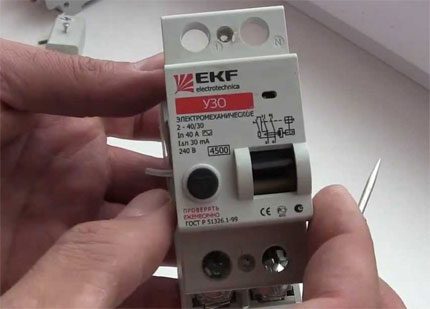
That is, the choice is made on the basis of traditional criteria for the selection of electrical equipment of this type:
- Purpose of use.
- Compliance with load current.
- Response sensitivity criterion.
- Case execution.
For use in everyday living conditions, the choice is usually made by single-phase devices with characteristics “AC” or “A”. For use on domestic networks of residential buildings, it is better to take devices with a sensitivity of 10-30 mA (for touch) and 100 mA (fire protection and short circuit). Case execution - the most convenient for installation and in terms of operation.
It should be noted: the differential current device is always mounted in series with a circuit breaker.Therefore, the current characteristics of both devices must match or the rated current of the UDT must be higher.
Conclusions and useful video on the topic
You can find out even more interesting information about the device, types and principle of operation of diffavomats from the following video:
The residual current protective devices are in fact circuit breakers supplemented by a sensitive system for detecting current leakage.
It is imperative that such devices be equipped with power networks, the performance of which is associated with the risk of contact between people and live parts of the equipment. Schemes of modern execution by default involve the introduction of UDT.
Want to talk about how you selected a differential switch to protect your home or country network? Do you have useful information on a topic worth sharing with site visitors? Please write comments in the block form below, post a photo and ask questions.

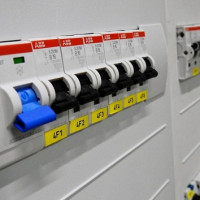 What is an RCD: device, principle of operation, existing types and labeling of RCDs
What is an RCD: device, principle of operation, existing types and labeling of RCDs 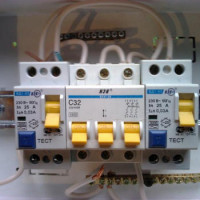 What RCD to put in a private house: an example of selection + selection tips
What RCD to put in a private house: an example of selection + selection tips  How to connect a differential machine: possible connection schemes + step-by-step instructions
How to connect a differential machine: possible connection schemes + step-by-step instructions 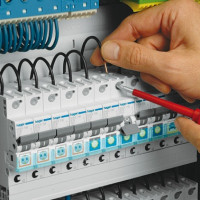 How to install a circuit breaker: step-by-step installation instructions
How to install a circuit breaker: step-by-step installation instructions  Fire RCD: selection recommendations, rules and installation diagrams
Fire RCD: selection recommendations, rules and installation diagrams 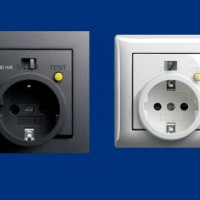 Socket with built-in RCD: device, connection diagram, recommendations for selection and installation
Socket with built-in RCD: device, connection diagram, recommendations for selection and installation  How much does it cost to connect gas to a private house: the price of organizing gas supply
How much does it cost to connect gas to a private house: the price of organizing gas supply  The best washing machines with dryer: model rating and customer tips
The best washing machines with dryer: model rating and customer tips  What is the color temperature of light and the nuances of choosing the temperature of the lamps to suit your needs
What is the color temperature of light and the nuances of choosing the temperature of the lamps to suit your needs  Replacement of a geyser in an apartment: replacement paperwork + basic norms and requirements
Replacement of a geyser in an apartment: replacement paperwork + basic norms and requirements